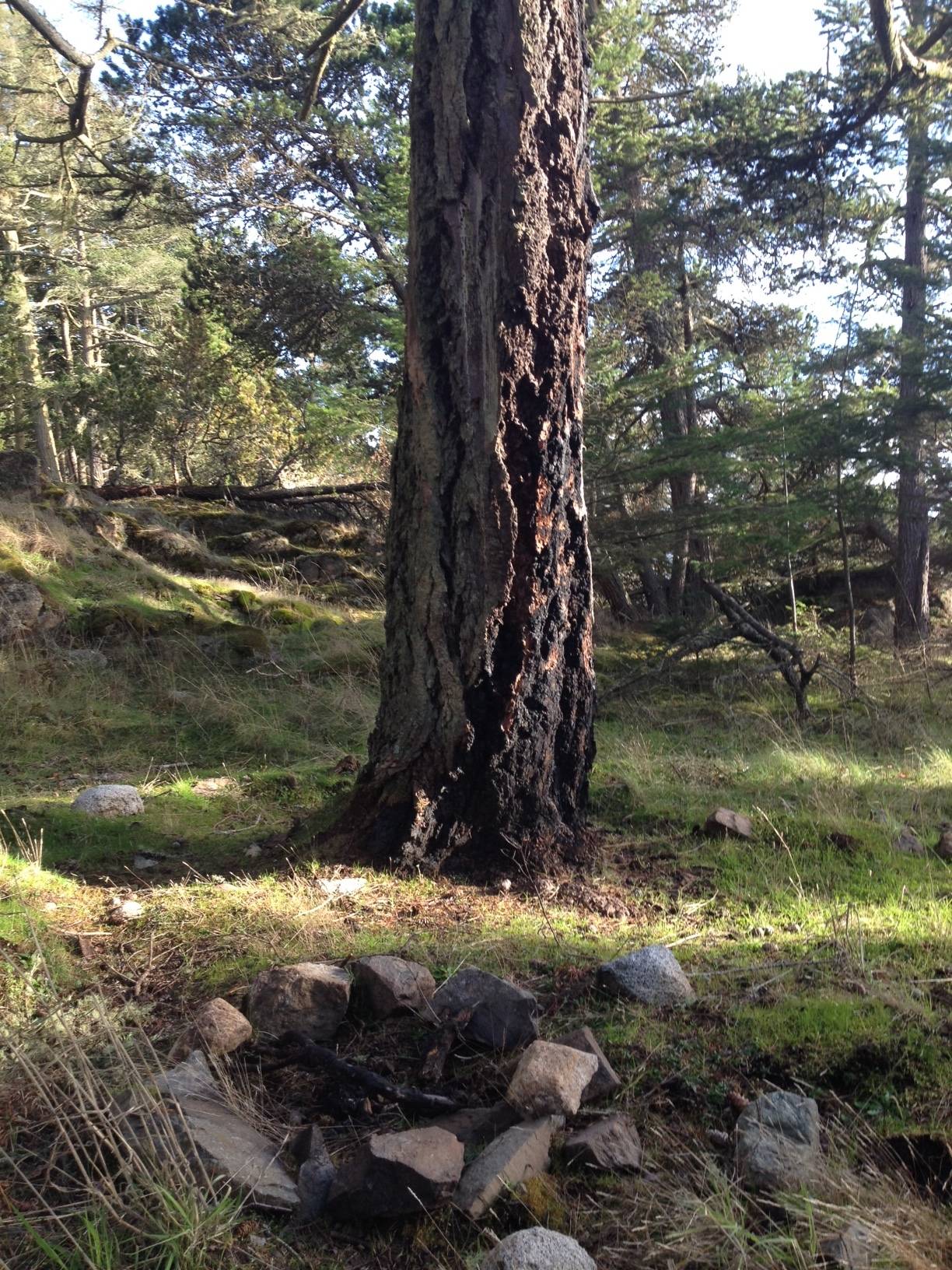Submitted by Sorrel North
One day last summer, islanders awoke to ash raining from the sky. An ominous gray blanket of smoke from one of the worst wildfire seasons in history permeated the air. Warmer, drier summers are becoming the norm in the San Juan Islands. Coupled with booming tourism, the threat of wildfire has become magnified.
In 2016 and 2017, the Lopez Fire Department successfully extinguished abandoned, illegal campfires at Shark Reef County Park. Because the fires were so far from the road, volunteers jogged through the woods with water strapped to their backs.
“If those fire situations had happened in August, we could have lost that whole side of the island,” said San Juan County Parks and Fair Director Dona Wuthnow. “Our strategy has to be prevention.”
According to Lopez Fire Chief J. M. Havner, “Being an all-volunteer department, we would be challenged to handle an extremely large fire. We would turn to the Department of Natural Resources for backup help. Depending on the time of year, they may or may not be available.”
Community involvement could be crucial, including farmers using heavy machinery to create firebreaks. In the case of a catastrophic wildfire, the fire department’s focus would be on evacuating and assisting homeowners who are in danger.
Two summers ago, a field fire on Lopez Hill was concerning enough for Havner to call the DNR. “We were told the earliest help might arrive in 48 hours,” Havner said. “During the dry season, the DNR is focused on major wildfires. For us, a big piece is public awareness. If you see something, say something. Call 911.”
DNR assistant region manager Jay Guthrie said response times would be slower due to the nature of islands. He advocates prevention measures, such as adequate signage and fire safety education. “When we’ve sent people out of the region to fight fires, that leaves minimal staffing for local fires,” Guthrie said. “But we always try to have enough staff in reserve for our local jurisdiction.”
Prior to 1850, Lopez forests consisted of large trees with lots of open space around them. Coast Salish peoples managed this landscape with selective clearing and occasional small flash fires, practices that kept fuel loads low. With the arrival of settlers, forests were heavily logged and burned, allowing small trees and dense underbrush to flourish. Over decades, layers of duff have accumulated, turning our forests into a virtual tinderbox during the dry season.
Kwiáht, a conservation biology lab, does not support controlled burns in the San Juans. Director Russel Barsh said that while archeological and ethnographic evidence in the islands does point to historical use of prescribed fires, Kwiáht advocates “living” firebreaks, belts of relatively moist, fire-resistant shrubs that don’t dry out in late summer and tend to block the advance of a fire.
“Native peoples mainly burned their garden weeds and underbrush, with a light touch,” said Barsh. “All available evidence indicates that Native fires rarely extended to more than an acre or two.”
Havner encourages public land stewards to have proper signage and educational materials at park entrances. Although currently none of the parks on Lopez has individual signs warning of fire danger, public land stewards are acutely aware of the increasing threat of wildfire and are implementing preventative measures.
Wuthnow has several plans for Shark Reef, including extra dusk patrols and individual fire danger signage. She believes building a community network is crucial and hopes to work with Department of Emergency Management Director Brendan Cowan on developing a fire prevention and management strategy.
Like Shark Reef, Point Colville and Iceberg Point are at particular risk because they lack road access. San Juan Islands National Monument manager, Marcia deChadenedes said the Bureau of Land Management has been working with the district’s fire management officer to bring their strategic responses up to date. A fuels and fire specialist was recently brought in to assess risk factors on BLM lands.
Along with BLM Recreation Specialist Nick Teague, deChadenedes plans to work on a public awareness campaign. “You can anticipate seeing some larger, attention-grabbing signs to let visitors know what best fire-safe behaviors we expect to see on the landscape,” said deChadenedes, adding, “If there are risky antics it won’t be for lack of information.”
Lopez Preserve Steward Tim Clark said the San Juan County Land Bank relies on monitors, vigilant neighbors and routine park users to report on suspicious activities. Local deputies also conduct random evening checks at the preserves. “Singular, temporary signs seem to get more attention than permanent administrative signs, so putting them up for the fire season would probably work best,” said Clark.
Havner and Guthrie both recommend the National Fire Protection Association’s Firewise USA program, which offers a framework for communities to learn about local wildfire risks and develop strategies for safety and prevention.
Lopez community members can take steps that include: Keep debris and brush away from the perimeter of homes. Don’t burn brush piles during the dry season. Use extreme caution with machinery near fields and grasses. Only use approved recreational fire pits, and pay attention to fire bans. Volunteer to be a park monitor. Start a fire safety phone tree.
The National Oceanic and Atmospheric Administration long-range outlook for the Pacific Northwest is calling for a warmer, dryer summer than average. If you see unattended fires on private lands, fire or smoke on public lands, call 911. Lives may depend on it.




